Dwell Time (VR/AR)
Drawing on my close interventions with people with disabilities as a non-disabled Human-Computer Interaction researcher, building assistive technologies with (and for) disabled people, this work is a VR/AR experience of a self-reflection (a scrapbook) on my morphing artistic and scientific practice.
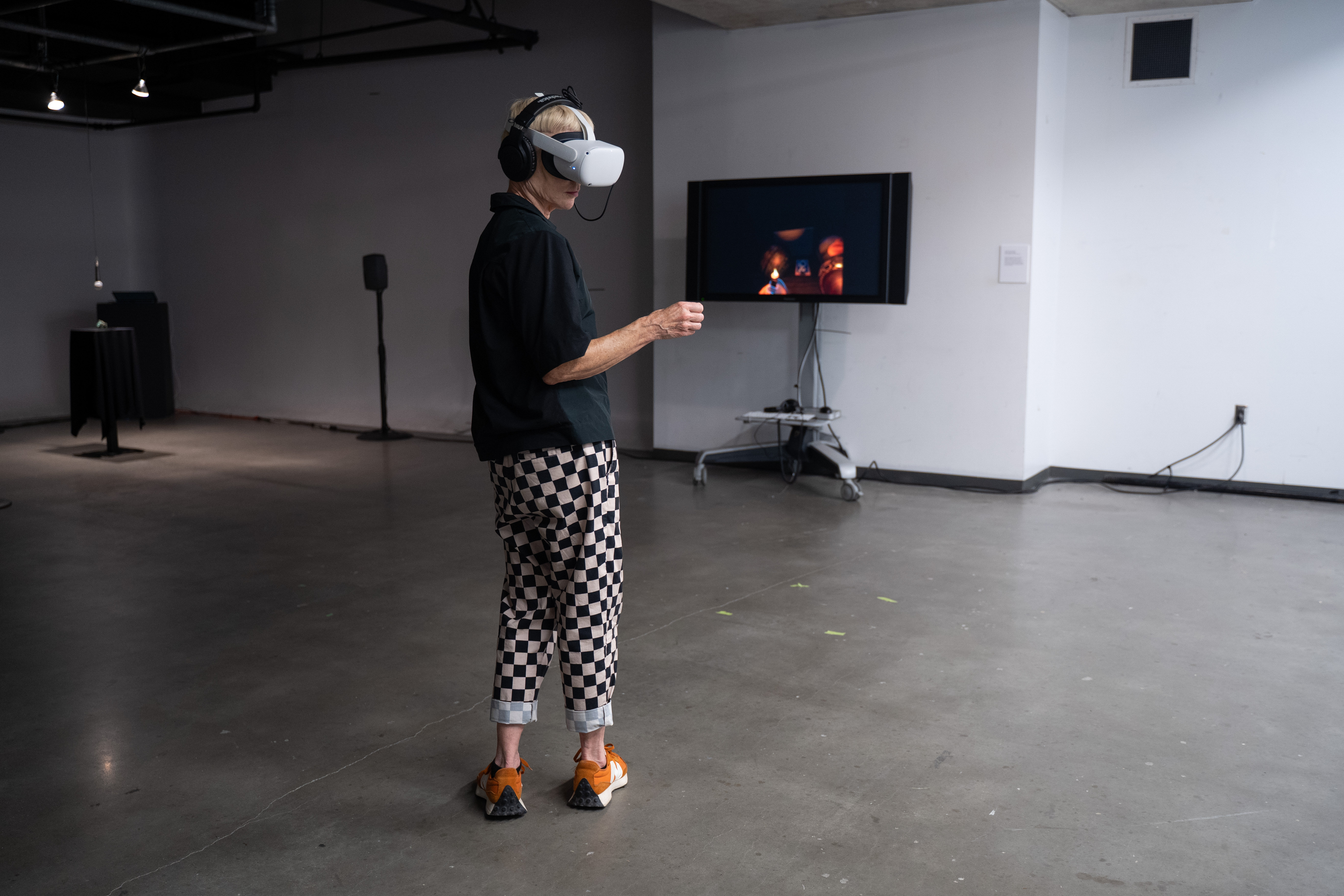 [photo credits: Agustina Isidori, in picture: Lynn Hughes]
[photo credits: Agustina Isidori, in picture: Lynn Hughes]
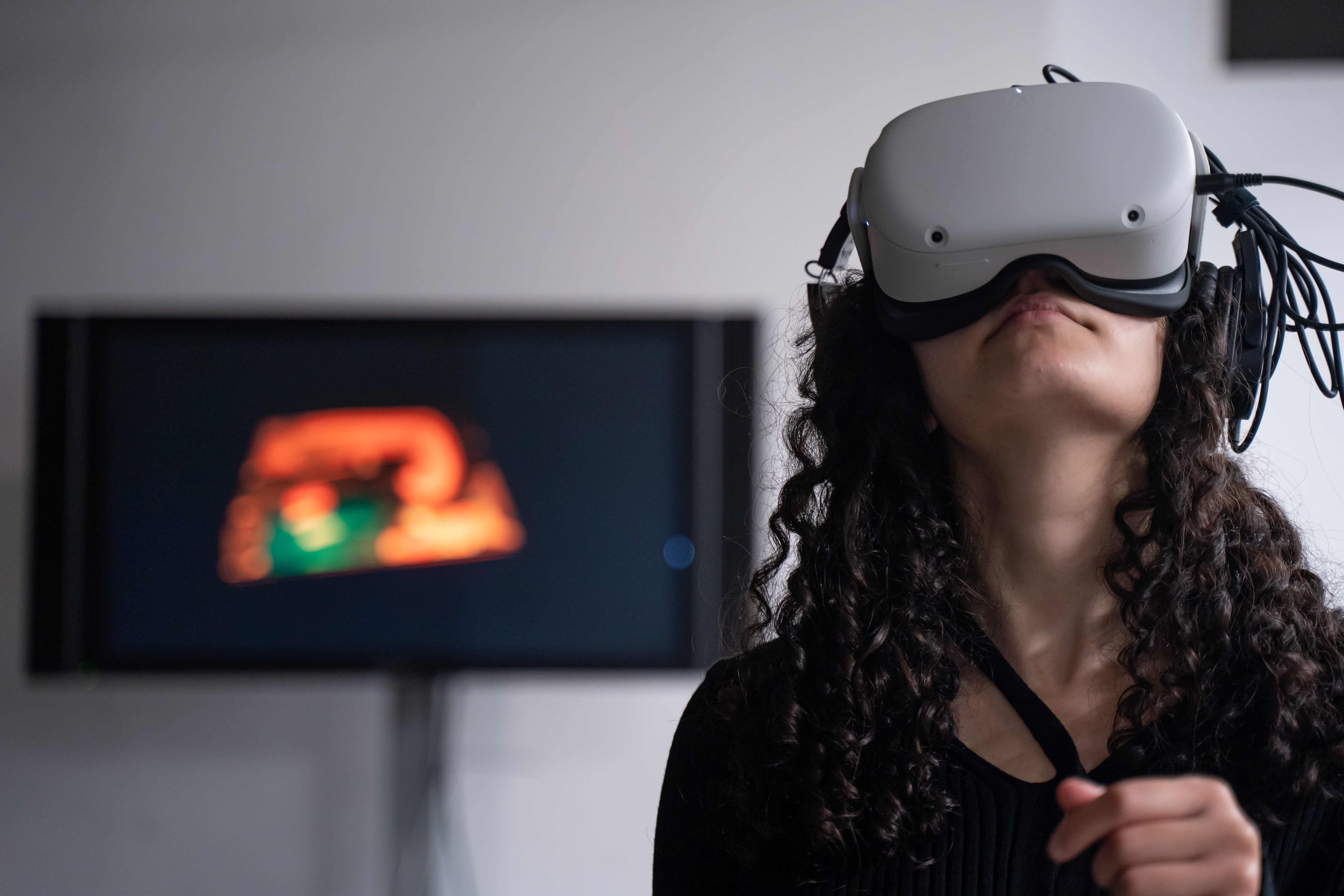 [photo credits: Agustina Isidori, in picture: Rochana Fardon]
[photo credits: Agustina Isidori, in picture: Rochana Fardon]
In the field of Human-Computer Interaction and eye-tracking studies, 'Dwell Time' is the time one has to gaze on a key on a screen to activate it.
In a philosophical garden, dwell time is the gap between intention and - action.
Setting a foot on the plane of these two definitions of dwell time, departures the development of this Mixed Reality work where I dwell on two separated yet entangled worlds of my practice - engineering and arts in the context of disability. Audience begins the experience in a chair where they are firstly guided by text, sound, objects, images, and embodied hands to establish a harmony with the virtual space.
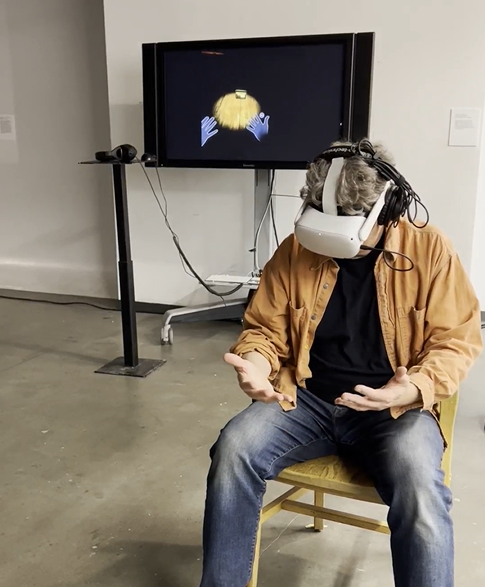 [photo credits: Yesica Duarte, in picture: Bart Simon]
[photo credits: Yesica Duarte, in picture: Bart Simon]
Eventually the piece invites the audience members to rely on sense of their ‘self’, their bodies, their proprioception to activate the piece by themselves. Holding a virtual candle in their hands, evading the darkness through a shimmering source of light, the audience explores “disability” unfolding itself as they navigate in the space.
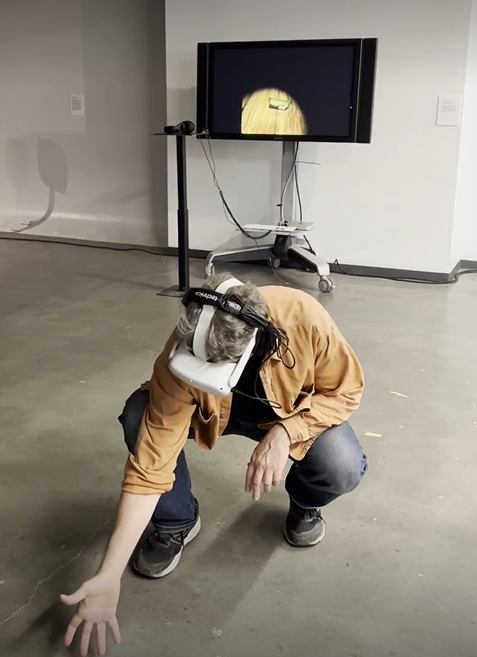 [photo credits: Yesica Duarte, in picture: Bart Simon]
[photo credits: Yesica Duarte, in picture: Bart Simon]
With spatially located sound, the audience bend and adjust their bodies to the height of the wheelchair to listen to a poem narrated by disability scholar and poet Ellen Samuels while an overlapping conversation between Puneet and his close collaborator, disabled artist and technologist Christian Bayerlein fills up the atmosphere of the space both visually and sonically - warping into a 360 degree video where the audience meet disabled musician and painter Eric Desrosiers in his house as he paints using a robotic arm.
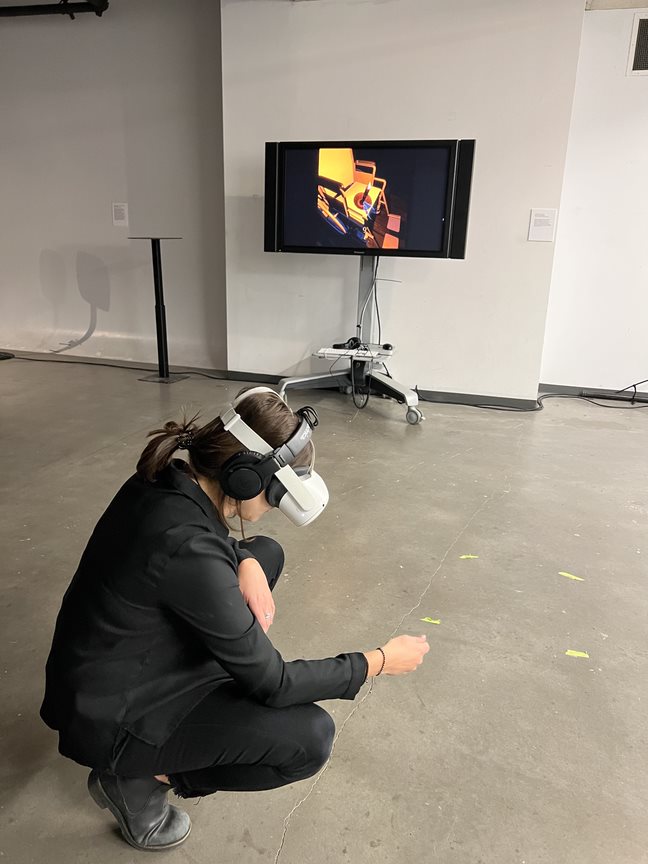 [photo credits: Yesica Duarte, in picture: Agustina Isidori]
[photo credits: Yesica Duarte, in picture: Agustina Isidori]
Cutting along the thin boundaries of engineering perception of disability: “a problem that needs to be solved”, the raining spheres framed, enclosed, and overlapped (with narration from HCI scholars) on audience bodies from an infinite space over their heads - intentionally re-narrate and re-situate audience bodies in the familiar virtual spaces with an increasing pace - playing with the memory of the body-mind and its intersection with time.
"The bodymind refuses to let go of the lost object, and deforms itself in the process."
-Ellen Samuels (Six Ways of Looking at Crip Time)
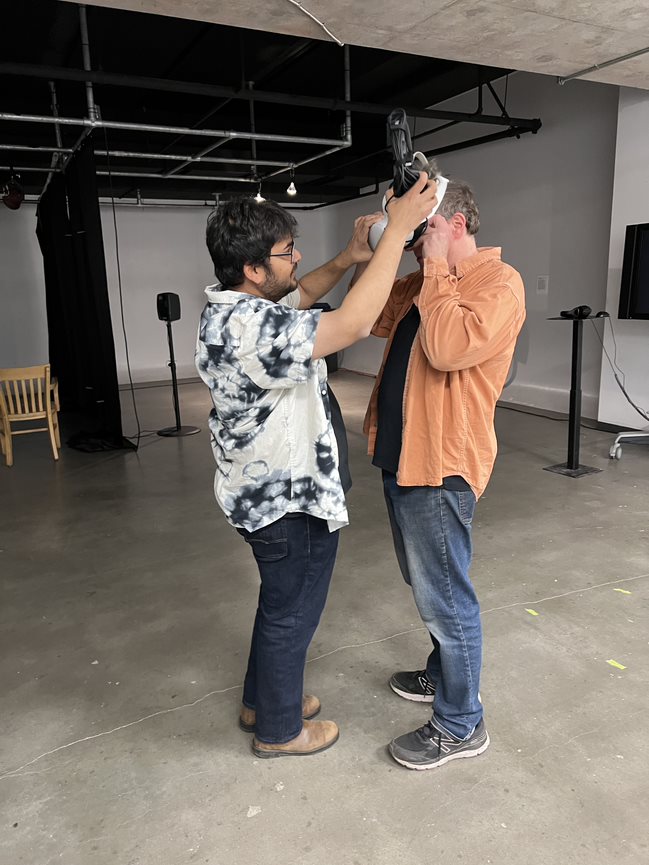 [photo credits: Yesica Duarte, in picture: Bart Simon]
[photo credits: Yesica Duarte, in picture: Bart Simon]
Opening the passthrough (the front cameras on the headset), the audience finally perceives the real and material space through the headset, starting grainy but slowly dissolving into a black-white space. Holding the virtual candle in the material space (what HCI researchers call augmented reality or AR) and surprised to me see Puneet through the black and white window of the headset, the piece ends as the audience hands over the headsets to Puneet.
Video Representation of Dwell Time